How To Fix Bobbin Case In Singer Sewing Machine: 2024 Guide
Do you want to know how to fix bobbin case in Singer sewing machine? Here are four easy tips, and other additional information, to help make learning this more effective for you!
A loose bobbin case is often the cause of a sewing machine malfunction. This tiny plastic or metal housing contains the bobbin and winding mechanism. The thread from the bobbin case goes through the needle plate to reach the needle.
If your bobbin case becomes detached or falls out, it can create all sorts of issues for your sewing machine to function properly. Continue reading this article to learn more!
How To Fix Bobbin Case In Singer Sewing Machine
If you’re wondering how to fix a bobbin case in a Singer sewing machine, look no further! Here are a few easy tips.
1. Lose the Bobbin Case
To fix a loose or fallen-out bobbin case in a Singer sewing machine, you must first remove the screw that’s holding it in place. There should be a small hole on either the top or side of your sewing machine where you can insert a screwdriver to take out the screw.
2. Get Bobbin out of the Machine
Once you’ve removed the bobbin case, carefully pull it out. You may also need to remove the bobbin case from a front-loading sewing machine. On some devices, you’ll have to turn the tension dial toward “loose.” Most machines will have a side that is labeled “pull” or has an arrow, which you can gently tug on to remove the bobbin case.
3. Replace the Bobbin Case
If you swapped an old, busted bobbin case with a new one, you’ll need to re-thread your machine by taking out the lower threading plate and following the diagram of where to thread your machine.
4. Thread the Bobbin Correctly
If you did not thread the new bobbin case correctly, the top thread would show on the bottom of the fabric. If this happens, cut off any knots and re-thread according to your sewing machine’s diagram and instructions manual.
Let’s explore a few reasons why your Singer sewing machine’s bobbin holder might not stay in place, as well as some solutions to correct the issue.
Related Article: What is a Bobbin?
How to Fix a Bobbin Holder
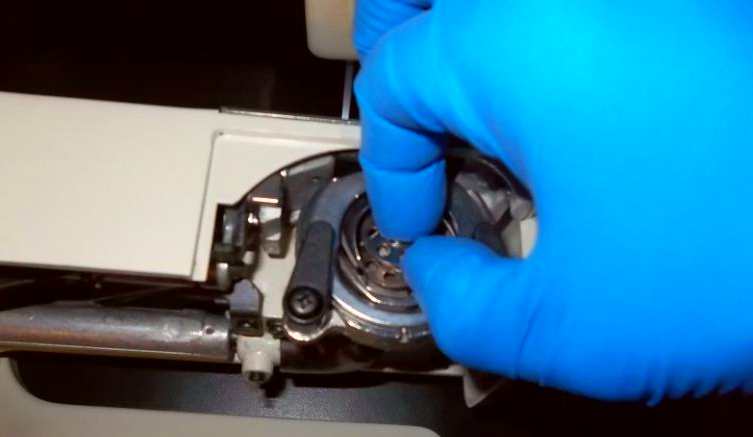
- You Are Not Using The Real Deal: If you’re wondering whether the bobbin is compatible with your machine, hold onto that thought. The last thing you want is an incompatible holder preventing your sewing from staying intact.
- The Direction Of The Bobbin: The direction in which your bobbin should face typically depends on the sewing machine you are using. For example, for a Singer sewing machine, the standard direction is outclockwise. Consequently, you should always take care to set up your bobbin properly and ensure that its thread is pointing in the same direction as how the bobbin holder turns.
- Positioning The Bobbin-winding Spindle: Once you’re finished winding the bobbin, return its spindle to its initial position. Otherwise, the needle won’t pick up on your bobbin thread. Keep your presser foot up during this process.
- Lint: You can keep your bobbin holder in top shape and prevent sewing problems down the road by regularly cleaning it out of lint. To do so, simply remove the holder and wipe away any accumulation of fluff. Cleaning your entire machine periodically will also produce better results overall, so don’t forget that step! And once you’re finished with both tasks, be sure to put all elements back in their places.
- Wrong Threading: If the thread does not pass through its side slot in the bobbin holder before being inserted through the needle, it means you probably did not correctly follow the steps for threading. For a successful outcome, ensure that both The upper and lower thread is on the bobbin holder. If they’re unaligned, your work will look unfinished and sloppy.
- Tangling: To avoid having your thread become tangled while you wind the bobbin, feed the thread through winding tension disks so that it stays tight in place. If you don’t do this,
- the machine will not be able to pick up the bobbin thread.
- Using The Wrong Needle: In addition to making sure your needle is in the precise slot, you should also double-check that the needle is new and the right size for your machine. The general rule of thumb is to use a medium-sized needle, but this may vary based on the fabric you are using.
- Length Of The Bobbin Thread: The bobbin thread should be 3-4 inches in length. If it isn’t, then check to see if the thread was wound correctly around the bobbin holder.
- Regular Servicing Of Your Machine: Get your machine checked and serviced every 6 to 12 months to keep it running well.
- Condition Of The Bobbin: The most crucial factor is that your bobbin must be in pristine condition. For example, when using plastic bobbins, you should look for cracks or any other damage. If the bobbin holder is cracked or damaged in any way, replace it with a new one immediately.
- Noises From The Bobbin Holder: If you’re hearing strange noise emanating from your bobbin holder, see tip four and give it a good cleaning!
- Loose Bobbin Holder: The bobbin holder being loose is usually due to the bottom plate of the machine not being tight. If this doesn’t fix it, check if the bobbin holder is inserted properly by listening for a click sound when inserting it.
How To Use a Bobbin Holder?
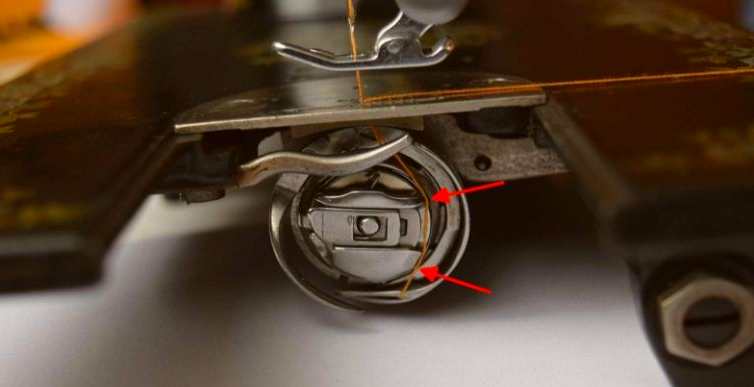
- Use this user manual to select the compatible bobbin for your sewing machine. Each type of Bobbin works with specific types of sewing machines and if you use the wrong one, it could damage either/both your tension settings or your machine.
- Instead of wasting time pausing and winding a new bobbin in the middle of sewing, save yourself some trouble by winding three bobbins before you start your project.
- This cannot be stressed enough: when you are cleaning your sewing machine, do not forget to wipe down the bobbin holder. The cleaner you keep your machine, the less likely it is to have issues.
- You can never have too many bobbins, so stock up whenever you see them. They’re always useful and you’ll end up going through them quickly, especially if you sew often. So next time you’re at the fabric store picking up supplies, don’t forget to grab a few packs of bobbins!
- Depending on the machine, it will take either a light plastic bobbin or a metal bobbin. It’s important to use the right type of bobbin for your specific machine because they each require a precise tension setting. If you’re unsure of what kind of tension your thread should have, you can hold the hanging by its thread and check that way.
- If you filler your bobbin too much, it will not function correctly and give you the results that you want.
- For a neater finish, cut the tail of the thread after you sew, so it doesn’t get tangled with the top or bottom threads.
- Consider getting manicure separators to help organize your workstation the next time you go shopping. They are perfect for storing bobbins and keeping them together in your drawer. You can also use ice cube trays or simple rubber bands as cost-effective solutions for holding your bobbins and threads together.
- Make sure your bobbins never get lost again by storing them in a pill holder with multiple compartments and a snap closure.
- If your sewing project isn’t going as planned, rethreading the needle is always a good place to start. If that doesn’t help, take out the bobbin and check if the thread has tangled or needs to be replaced.
How To Fix A Singer Sewing Machine Bobbin Case At Home Easily
- Carefully read the Singer manual for your specific model, paying particular attention to the illustrations and troubleshooting recommendations.
- The best way to fix a bobbin case issue is by replacing it.
- To turn the sewing machine off, unplug it from the power source.
- To remove the bobbin cover, you will need to determine the release lever on the bobbin case.
- To release the bobbin case, pull the lever away from the case via the hinge.
- securely place the bobbin case on the spool, and flip the lever back into position.
- Before you replace the cover, test if the new bobbin case is secure.
How You Can Put The Bobbin Case Back In A Singer Sewing Machine?
- Depending on the model of the Singer sewing machine, use the corresponding bobbin case.
- To learn what type of bobbin mechanism your Singer sewing machine model uses, consult its manual.
- Slide the replacement bobbin case under the fabric feed, so that it is positioned correctly.
- Make sure that the split side of the bobbin case is lined up under the feed before you slide the edge of the case under the positioning plate.
- The positioning plate is located at the corner of the bobbin case opening, and the bobbin should be able to glide along the hook race.
- To secure the bobbin case, twist the bobbin case holder forward.
- Verify the movement of the bobbin case to confirm it is securely in place by moving the handwheel.
- Replace the needle plate, and insert your bobbin.
- Put the new cover on the machine where the old one was.
How Do You Get A Bobbin Case Off?
- To properly shut down your sewing machine
- Insert the needle and presser foot into the fabric.
- You can remove the needle plate by opening the slide plate above the bobbin case and removing the screw that holds it in place.
- To thread the bobbin, first, turn the bobbin case holder towards the back of the sewing machine.
- Pinch one side of the bobbin case so that it slides off the machine.
When Should I Replace My Bobbin Case?
- When you notice damage on the bobbin case
- If you notice the thread bunching up or getting stuck
- If the case always pops out of your sewing machine,
Why Does My Bobbin Case Keep Popping Out?
- If the bobbin case isn’t inserted correctly, your machine won’t work properly.
- The bobbin case is either damaged or has a burr on it.
- The bobbin case was not threaded correctly.
- There’s a piece of thread caught in the bobbin case.
- The bobbin case is not aligned with the thread path.
- Some machines have a horizontal bobbin that pops out easily.
- Over time, dust and lint can build up in the race and rotary hook area.
- You’re using the inappropriate bobbin for your sewing machine.
Are Bobbin Cases Universal?
No, Bobbin cases are not universal because there are two types of bobbin cases- removable and inset. Additionally, you must always check your sewing machine manual to see which type of bobbin case it uses so you can purchase the right one.
Removable Bobbin Cases
You can remove the bobbin case if it’s removable, as implied by the name. This comes in handy when you need to replace the bobbin. Most times, a lever or spring is required for taking out or putting in a new one. Additionally, a removable bobbin case can be either front-loading or side-loading.
Inset Bobbin Cases
The most common type of bobbin case you’ll see on newer sewing machine models is the drop-in, or insert, bobbin case. With this type of Bobbing case, there’s no need to take it out as you would with other types; hence, making it more beginner-friendly and allowing for a quicker replacement of the bobbin.
Conclusion
Even if you follow all the rules, accidents can still happen. The only tension you should feel while sewing is from the tightening of your settings. To get the most out of your work, be prepared for problems and learn new ways to creatively tackle them with minimal stress!
Bobbins are a great way to keep your thread secure while you’re sewing. With the tips we’ve provided, your stitching experience will be much easier and better. Happy stitching!
Was this article helpful for you? To summarize, How to fix bobbin case in Singer sewing machine, check for signs of damage, and replace it if necessary. If the case is making noise or popping out, this could be an indication that there is something wrong with it.
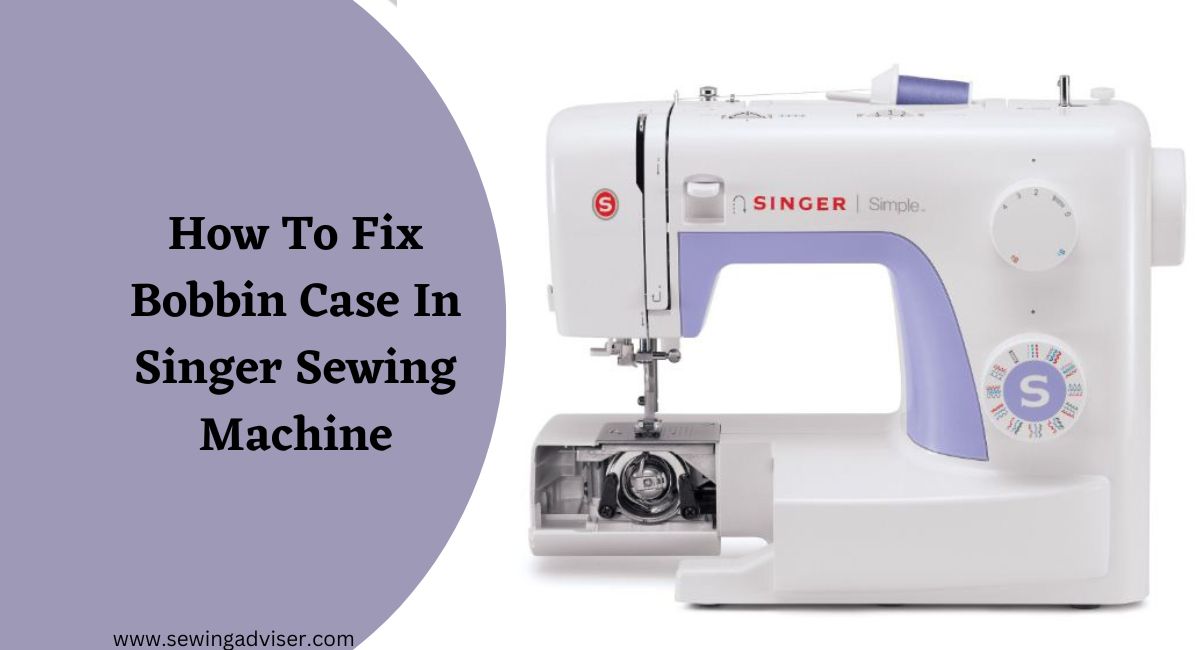
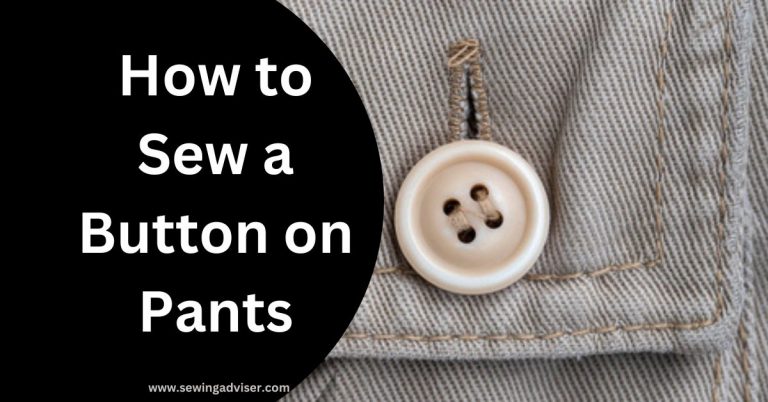
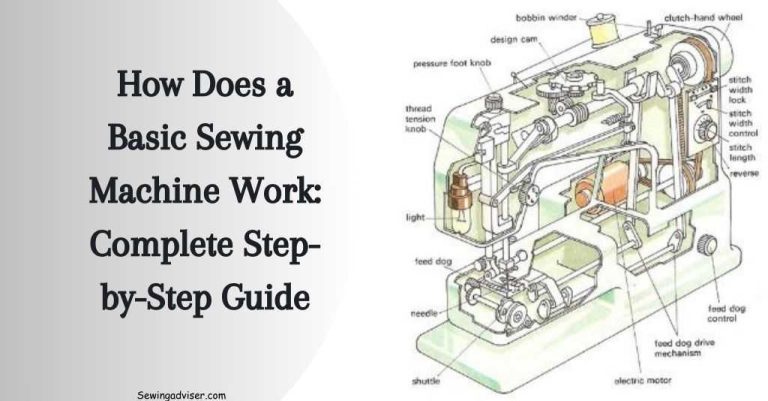
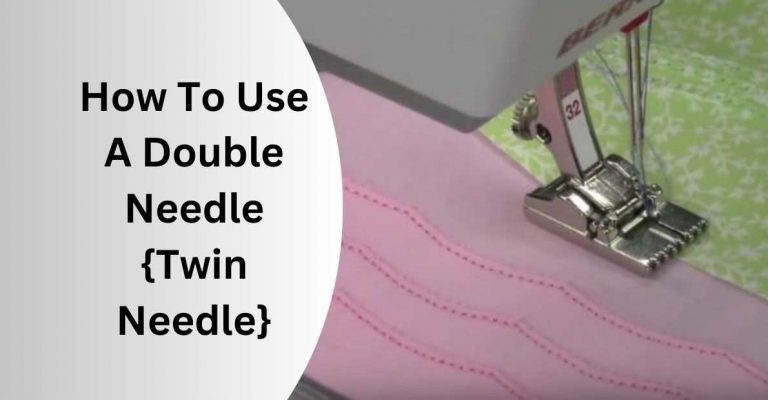
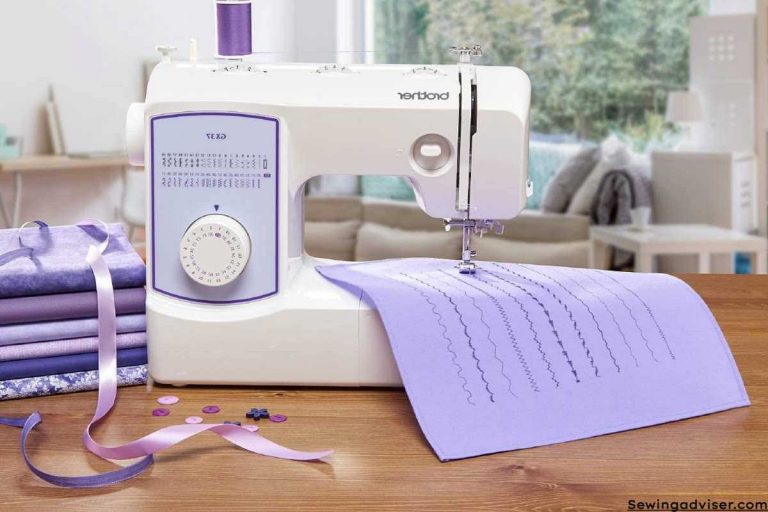
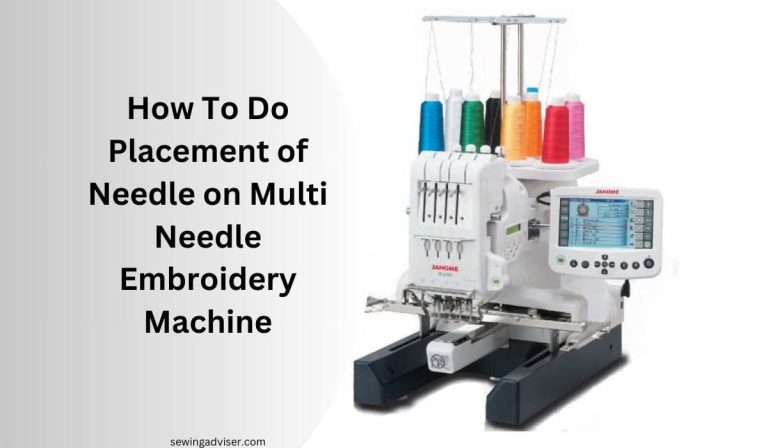
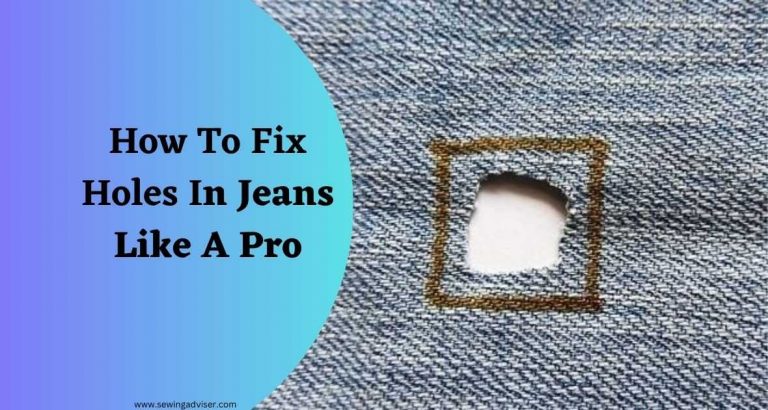
30 Comments